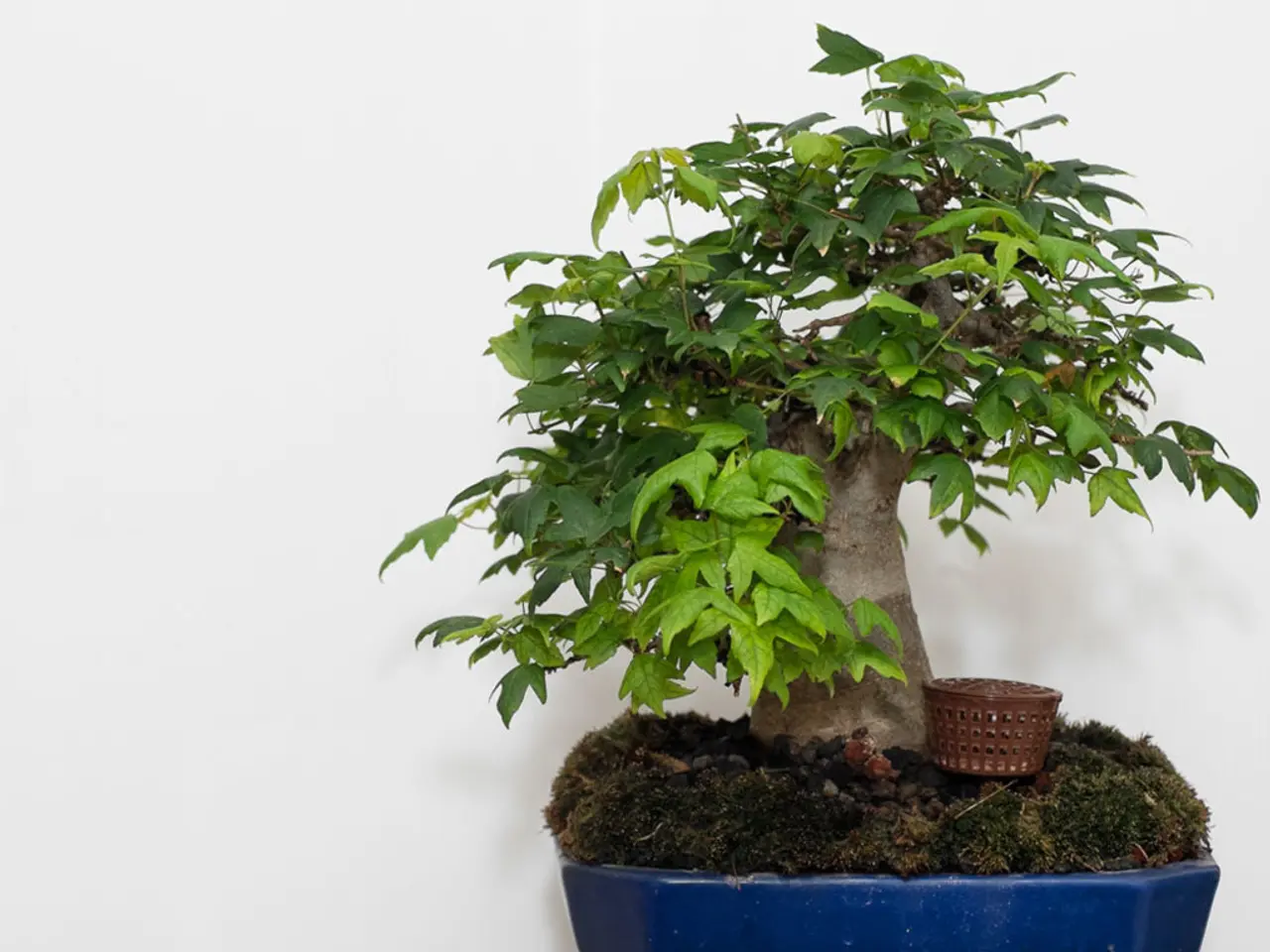Bonsai Design and Layout: Achieving Balance and Eye Appeal
Unleashing Dynamism: The Art of Line and Movement in Bonsai Design
In the intricate world of bonsai, the principles of line and movement play a crucial role in creating visually captivating miniature trees that pulse with energy. These fundamental elements of visual composition are not just limited to bonsai, but are employed by artists across various art forms to evoke a sense of power, resilience, and life.
The line, in the context of bonsai, refers to the orientation and curvature of the trunk and branches. Different bonsai styles emphasise varying trunk lines, such as the formal upright (Chokkan), informal upright (Moyogi), slanting (Shakan), or cascade forms, each creating a unique directional flow and character. Curved or slanting lines add grace and a sense of motion, contrasting with straight, vertical lines that convey steadiness.
Movement, on the other hand, is visually suggested by how branches extend and curve, creating rhythm and asymmetry that keep the composition dynamic rather than static. The placement and angles of branches can imply wind, growth struggle, or natural imbalance, enticing the viewer’s gaze to travel through the tree’s structure.
The combination of line and movement establishes a dynamic dance of lines, shapes, and textures that enthrall the viewer's attention. This collaboration with the tree’s inherent traits results in a visually striking bonsai with a powerful sense of life and motion.
By orchestrating visual weight and emphasis, bonsai designers can create a sense of direction and focal points, guiding the viewer's eye to specific areas of the composition and imbuing the tree with a sense of dynamic energy. These curved lines create a sense of continuity, connecting disparate elements and fostering a sense of unity within the design.
In the domain of bonsai design, mesmerising visual flow is achieved when the viewer's eye is skillfully guided along a deliberate path, fostering an immersive experience that resonates with the tree's inherent energy. The artist, in essence, crafts a visual symphony that resonates with the viewer on a deep and emotional level.
Asymmetry is often deliberately introduced to bonsai designs to create a sense of fluidity and motion. Through the thoughtful incorporation of varying textures and patterns, bonsai designers can inject an added layer of visual interest and movement into their compositions.
The windswept form, in particular, is particularly effective in conveying a sense of power and resilience. Contrasting line directions can further amplify this dynamic effect by creating visual tension and energy through the juxtaposition of different angular movements.
In conclusion, line in bonsai governs the structural shape and flow, while movement adds rhythm and life, together crafting miniature trees that visually pulsate with dynamic energy. By mastering these principles, bonsai artists can create living sculptures that captivate the imagination and evoke a sense of awe.
[1] Bonsai Empire. (n.d.). Bonsai Styles. [online] Available at: https://www.bonsaiempire.com/bonsai-styles/
[3] Bonsai Empire. (n.d.). Bonsai Techniques. [online] Available at: https://www.bonsaiempire.com/bonsai-techniques/
- The principles of line and movement, essential in creating vivacious bonsai, are also used in various art forms, such as fashion-and-beauty, personal-growth, and shopping, to convey power and life.
- In the realms of food-and-drink and home-and-garden, elegant curvatures and distinct clusters in the arrangement of plates or furniture can suggest a dynamic movement, inviting the viewer to explore the space.
- Relationships can be compared to a dance, with each person contributing lines and movements that create a harmonious, yet dynamic, connection.
- In the world of pets, the way a cat or dog moves can be as mesmerizing as the twists and turns of a bonsai, embodying grace and energy.
- Travel experiences can be a journey of lines and movements, from crowded urban landscapes to vast, open countrysides, each with its unique visual flow that enthralls the traveler.
- Career-development, like a bonsai, requires continuous growth, and embracing change and adaptation in one's professional path can create a sense of resilience and dynamic energy, aiding personal growth.




